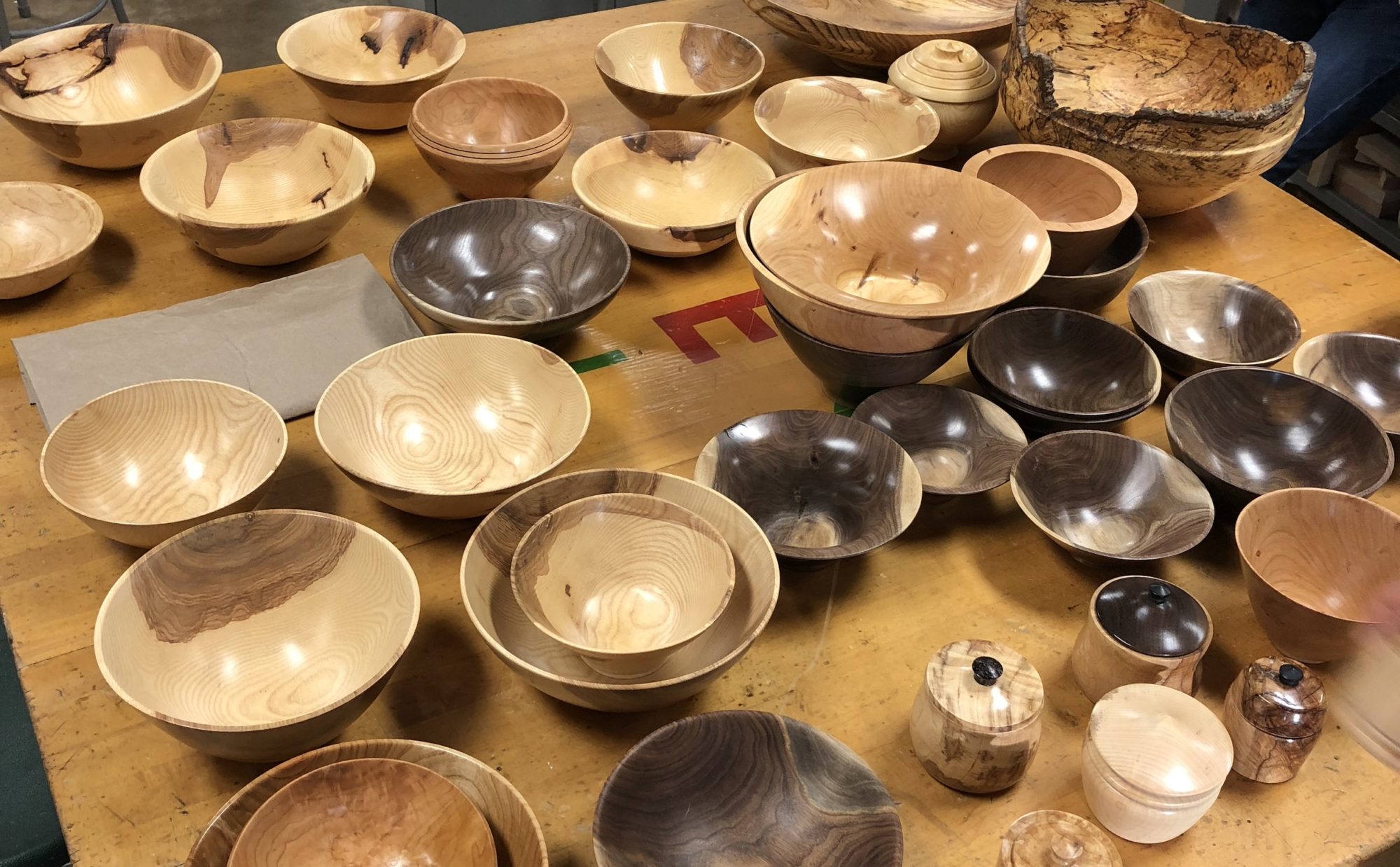Mark Mclaren demonstrated how to make a twig (weed) pot. He also shared several design principles which everyone found very helpful.
- Woodturning Design
Design Elements: (things that can be manipulated or modified in some way). Common to many areas of our
environment, photography, architecture, landscaping, pottery, etc. - Color/Value: Color should suit the overall shape. Value: Light vs dark within the piece (grain, etc)
- Texture: Rough, smooth, etc. Finish to be used. How does it feel in the hand
- Shape/Form: How will the object appear from different angles? Does appearance change with perspective?
- Pay close attention to where flow changes shape or direction. Sharp or smooth, in between not good. o Catenary Curve: (Seen in our environment) Pleasing to the eye.
- Where does curve end, above or below horizon?
- Scale: Size of object should match the intended use.
- Proportion: Relative comparison of the individual elements within the object. Curves, beads, coves,
embellishments, etc- Avoid placing a design element (bead, direction change, etc) near the center line.
- Rule of 3s. Elements or changes at 1/3 point.
- Box lid should be 1/3 of the overall dimension.
- For bowls/platters: Base should be 1/3 diameter of piece.
- For closed forms: Opening at top 1/3 diameter.
- Golden Mean: Used by Greeks and Egyptians. (1:1.618) 5:8 ratio. Used for the overall dimension of the
object being turned.
Design Principles
- Center of Interest, Balance, Harmony, Rhythm. Style: Modern, rustic, natural, wabi-sabi (organic, imperfect, dull, soft vague shapes, etc.
- Plan before you turn (draw it, mark the blank, etc), visualize during turn, make changes as needed while turning.
- Keep it simple, imperfections are ok and interesting, do what feels right for you.
- Turn, explore, tap in to your creative side.

